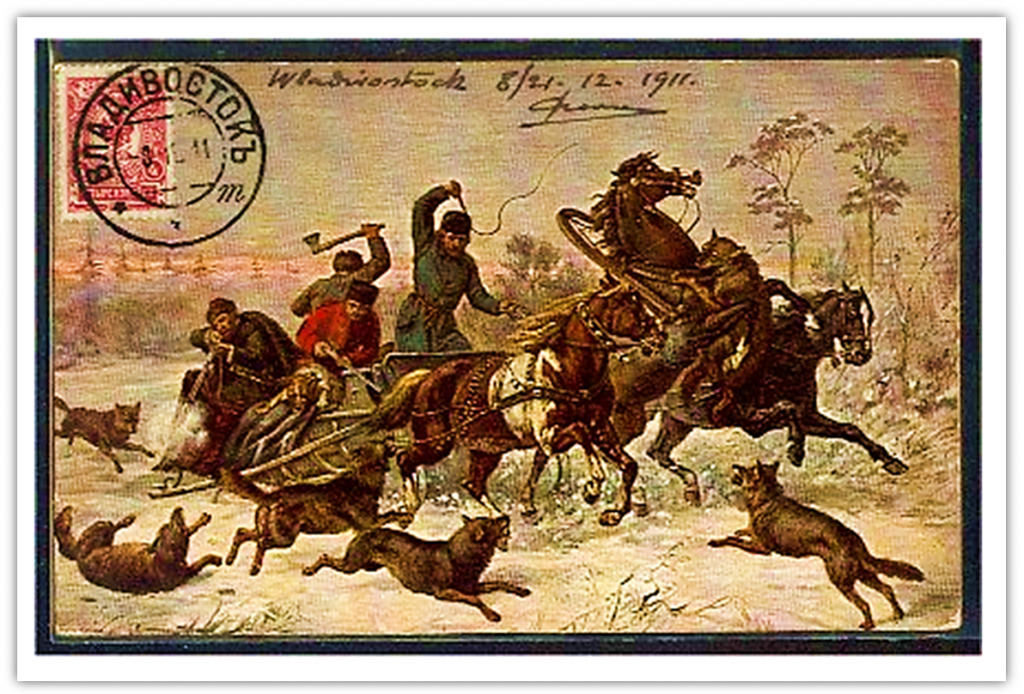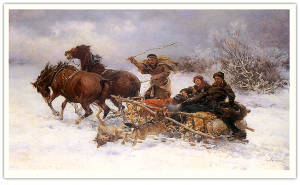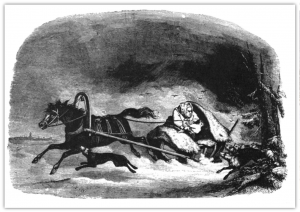
A well-known component of Russian culture is the deep-seated anxiety regarding wolves. Some of the concern stems from the inclination to project ancient myths, fables, and superstitions about wolves. But to a large degree, fear about wolves is based in reality and rooted in a long history of conflict between wolves and the Russian people.
One famous Russian phrase arising from the anxiety over wolves is “lighten the troika.” Literally meaning a “group of three,” troika typically refers to a team of three horses pulling a sledge or wagon. To “lighten the troika” signifies throwing something – or someone – off a vehicle being pursued by wolves so the others can get away before the horses collapse. The phrase is comparable to the English expression, “thrown him to the wolves.”
In fact, there is an entire sub-genre in 19th century painting of Russian and Eastern Europe in which wolves chase overloaded sledges through the snow. Some subjects are forced to “lighten the troika.”
Wolves attacking a Sleigh (1890) by Alred Wierusz-Kowalski. Top: 1911 Russian postcard depicting men defending their sledge from a wolf attack.
An engraving published in Les mysteres de la Russia by Frederic LaCroix (1845). The image depicts a pack of wolves attacking the sledge of a Russian peasant woman, who is about to throw one of her children to the wolves.

